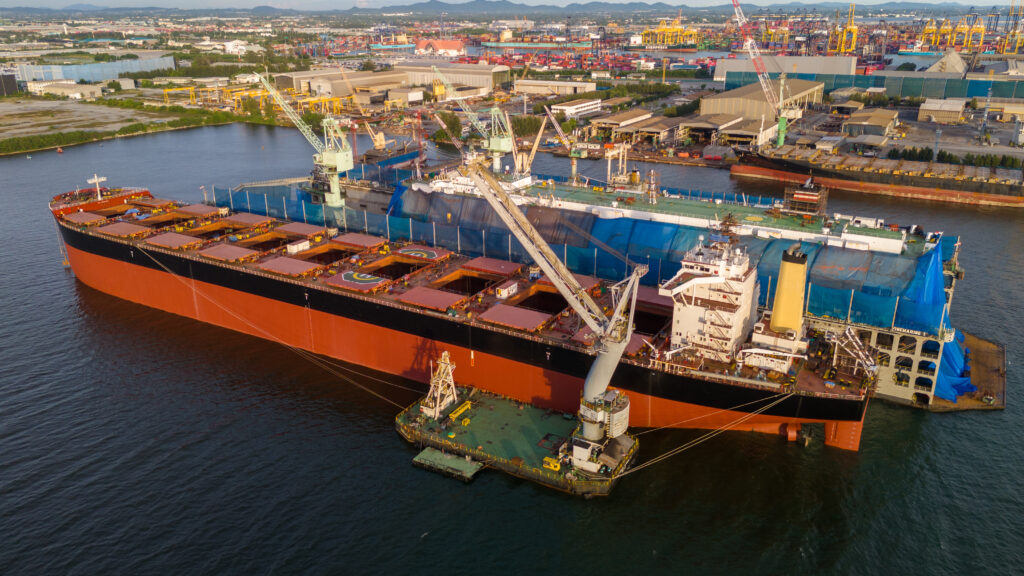
Barge transport might not be the most heavily regulated industry, but regulations certainly impact every barge company’s operations one way or another. Government regulations are created to maintain safety, environmental stewardship, and fair competition. However, these laws often come with broader business implications for the barge companies they mandate.
Strategies for Managing Inland Marine Compliance
The regulations shaping barge transport today touch every aspect of the industry, from the legal framework governing vessel ownership to waterway protection. Environmental regulation, the Jones Act, various cargo acts, cybersecurity standards, and hazardous materials regulations all dictate operational requirements and necessitate strategic decision-making to mitigate costs and risks.
Environmental Regulations
The barge industry operates under stringent environmental regulations aimed at protecting water quality and reducing emissions. The Clean Water Act (CWA), for example, governs the discharge of pollutants into navigable waters. The Vessel Incidental Discharge Act (VIDA)–which has replaced the Vessel General Permit (VGP)–regulates ballast water discharges and other vessel-related effluents. And the Environmental Protection Agency’s (EPA) Tier 4 standards mandate the use of cleaner engines to reduce air pollution.
All of these regulations, while essential for environmental sustainability, pose operational and financial challenges for barge companies.
Some strategies for managing environmental compliance efficiently include:
- Adopt fuel-efficient technologies: Invest in electrification and cleaner fuels to meet emissions standards while reducing long-term fuel costs.
- Implement regular maintenance programs: Maintain engines and other equipment to ensure optimal performance and minimize the risk of non-compliance with emissions and discharge standards.
- Consider eco-friendly retrofitting solutions: Upgrade existing vessels with energy-efficient systems, such as improved hull designs and propulsion systems, to reduce environmental impact.
- Invest in compliance tracking software: Use digital compliance tools to monitor and document regulatory compliance, ensuring timely reporting and adherence to evolving requirements.
The Jones Act
The Jones Act, officially the Merchant Marine Act of 1920, mandates that vessels transporting goods between U.S. ports must be U.S.-built, -owned, and -crewed. This foundational law was designed to enhance national security, protect the domestic shipbuilding industry, and ensure a reliable merchant fleet for wartime needs. But today, it has become a source of widespread criticism due to its cost-prohibitive nature. The Jones Act significantly inflates shipping expenses and limits competition.
For barge companies, compliance with the Jones Act is not optional, which means you must be highly proactive in managing costs elsewhere to remain profitable. That might look like:
- Optimizing fleet utilization: Ensure that vessels are operating at or near capacity to maximize revenue per trip and reduce per-unit transportation costs.
- Streamlining operations: Leverage specialized barge software to improve scheduling, reduce downtime, and minimize fuel waste to enhance operational efficiency.
- Negotiating long-term contracts with customers: Locking in predictable revenue streams helps to offset operational costs.
- Diversifying cargo types and routes: Expanding the types of goods transported and exploring new markets to spread risk and increase revenue potential.
- Collaborating with other maritime operators: Sharing resources, such as leased vessels or port infrastructure, to reduce individual company expenses.
Cargo Preference Laws
Cargo preference laws require a certain percentage of government-impelled cargo to be transported on U.S.-flagged vessels. These laws, including the Cargo Preference Act of 1954 and the Military Cargo Preference Act of 1904, require that at least 50% of civilian government cargo and 100% of military cargo are shipped on U.S.-flagged ships.
Like the Jones Act, cargo preference laws aim to maintain a viable U.S.-flag fleet for strategic purposes, but have been criticized for driving up costs for government programs such as food aid, and reducing the efficiency of global logistics. In addition, they create a financial burden on barge companies by limiting access to lower-cost foreign-flagged vessels and increasing operational expenses.
Likewise, the same strategies mentioned in the previous section apply here. To stay competitive, barge companies must be as operationally efficient as possible to maximize profits where they can.
Cybersecurity Regulations
As the industry relies more heavily on digital systems for navigation and cargo management, cybersecurity in barge transport has become a critical concern. On January 17, 2025, the U.S. Coast Guard published a final rule titled “Cybersecurity in the Marine Transportation System,” introducing new cybersecurity requirements for the maritime sector. Effective July 16, 2025, the rule mandates that owners and operators conduct detailed cybersecurity assessments to identify vulnerabilities in their systems that could potentially lead to transportation security incidents (TSIs). Other key requirements include development and maintenance of Cybersecurity Incident Response Plans and personnel training.
To comply with these requirements, barge companies must take proactive measures, such as:
- Conduct Regular Risk Assessments: Identify and evaluate vulnerabilities within IT and operational technology (OT) systems to prioritize mitigation efforts.
- Develop a Cybersecurity Plan: Establish comprehensive policies and procedures tailored to your operations, ensuring alignment with the new Coast Guard requirements.
- Implement Regular Training Programs: Educate employees on cybersecurity best practices to foster a culture of security awareness and reduce the risk of human error.
- Invest in Advanced Security Technologies: Deploy firewalls, intrusion detection systems, and encryption tools to protect critical data and infrastructure from potential threats.
- Establish Role-based Access Control (RBAC): BargeOps’s role-based permissions, for example, enable companies to granularly set access to different systems and information, limiting access to internal systems based on the user’s role.
Hazardous Materials Regulations
The transportation of hazardous materials (HAZMAT) by barge is governed by strict regulations outlined in Title 49 of the Code of Federal Regulations (CFR). These rules detail requirements for handling, stowing, and segregating hazardous cargo to ensure safety during marine transport. Key provisions include proper documentation, adherence to stowage compatibility charts, and procedures for emergency response readiness.
Strategies for ensuring adherence include:
- Centralize Documentation: Streamline tracking and compliance for hazardous materials by keeping records organized and easily accessible.
- Real-Time Monitoring: Use digital tools to track shipments, ensure proper labeling, and verify packaging compliance.
- Training and Emergency Drills: Regularly train staff and conduct drills to ensure safe handling of hazardous materials and effective incident response.

How BargeOps Enables Strategic Compliance
Understanding the impact of barge transport regulations can be overwhelming, but tools like BargeOps make compliance more manageable. BargeOps simplifies tracking the data needed for regulatory adherence, from cybersecurity protocols to hazardous materials documentation, ensuring you stay compliant with evolving laws.
By automating processes and providing real-time insights, BargeOps helps barge companies reduce inefficiencies, cut costs, and offset the financial constraints created by regulations like the Jones Act and cargo preference laws. Contact us today to learn more about how staying compliant doesn’t have to come at the expense of profitability.


